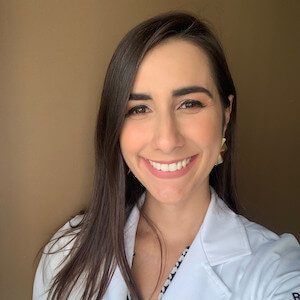Every pregnant woman has a lot of doubts and concerns. Some people say that some of them are just typical pregnancy worries, but let’s agree that sometimes you just can’t help but feel anxious. One situation that usually leaves moms feeling puzzled is the first request for a morphological ultrasound, which comes with some complicated terms like fetal biometry and BPD. First comes the joy of the first ultrasound, of being able to see the baby and make sure everything’s ok, but after paying close attention to the fetal biometry references, it can feel like you’re reading the names of a bunch of super-rare diseases! But don’t worry, it’s not like that at all.
What do the exam acronyms mean?
Each acronym represents a measurement reference and indicates the gestational age, weight, and size of each important part of the baby’s body. This allows the doctor to track whether the baby is developing as expected.
Fetal anatomy through ultrasound
The morphological ultrasound is used to assess the entire structure of the fetus including the brain, skull, face, hands, feet, ribs, spine, heart, chest, and abdomen, for example. And for the doctor to be able to examine all this structure through the exam, the baby needs to cooperate! If the baby is moving a lot or is in a position that makes it difficult, the exam may not be possible, so you’ll have to hold your excitement and repeat the process another time. It’s during the morphological ultrasound that the doctor performs all the important measurements1 and is able to map not only the gestational age, but also the weight and all the development of the baby.
What is Fetal Biometry?
Fetal biometry is the measurement of the baby taken through the morphological ultrasound, which is used to monitor the size of the fetus and determine the gestational age (GA), something essential for checking whether the baby’s growth is as expected2. Gestational age can be determined by assessing certain fetal measurements. During the first 3 months, it is measured by the crown-rump length (CRL); later in pregnancy, gestational age is calculated using three important measurements: head circumference (HC), femur length (FL), and biparietal diameter (BPD). All these parameters are evaluated together to reduce the margin of error, since the measurements should be proportional to each other. Once the gestational age is identified, the other measurements are used just to monitor the baby’s growth, which is very important for identifying any abnormality and enabling early treatment. So now you know, when you come across a lot of acronyms on your ultrasound, there’s no need to panic. Remember that it’s all about fetal biometry and that each one indicates an important measurement of your baby’s body. Basically, it’s through these measurements that you can determine whether your baby is growing healthily and as expected for the gestational age.
BPD Fetal Biometry Information and Reference
The biparietal diameter (BPD)3 is the measurement of the baby’s head. This measurement shows the distance between the bones that form the sides of the head (parietal bones) and is one of the most important references for assessing fetal development during pregnancy. There are some reference values that doctors use as a basis for monitoring whether skull development is as expected for the gestational age. If your baby’s measurements don’t match the reference, don’t worry, many factors can interfere and being outside the reference (whether above or below) does not necessarily mean there is any kind of abnormality. Only the doctor can determine whether there is any cause for concern. If there are doubts, other detailed tests will be carried out for an accurate diagnosis. Below is the table of reference measurements for biparietal diameter (BPD): 
Influence of external factors on fetal biometry
Some factors can directly affect the baby’s growth, which is why the fetal biometry references are just a guideline. The mother’s physiological characteristics can influence the fetus’s development, such as a disease during pregnancy. This should be reported to the doctor so they can evaluate whether it is affecting weight gain or another aspect of development. We also can’t forget to consider the baby’s own body type characteristics, after all, every baby is unique. If the parents are taller, slimmer, in short, all the genetics that the baby inherits will make its measurements just right “for them.” Try to relax, take all the tests without prejudice or jumping to conclusions. Have open communication with your doctor so that you can ask questions about anything you may be unsure of, and follow every stage of your baby’s growth with joy and without unnecessary worries. See also: Reference Table for Fetal Size and Weight











